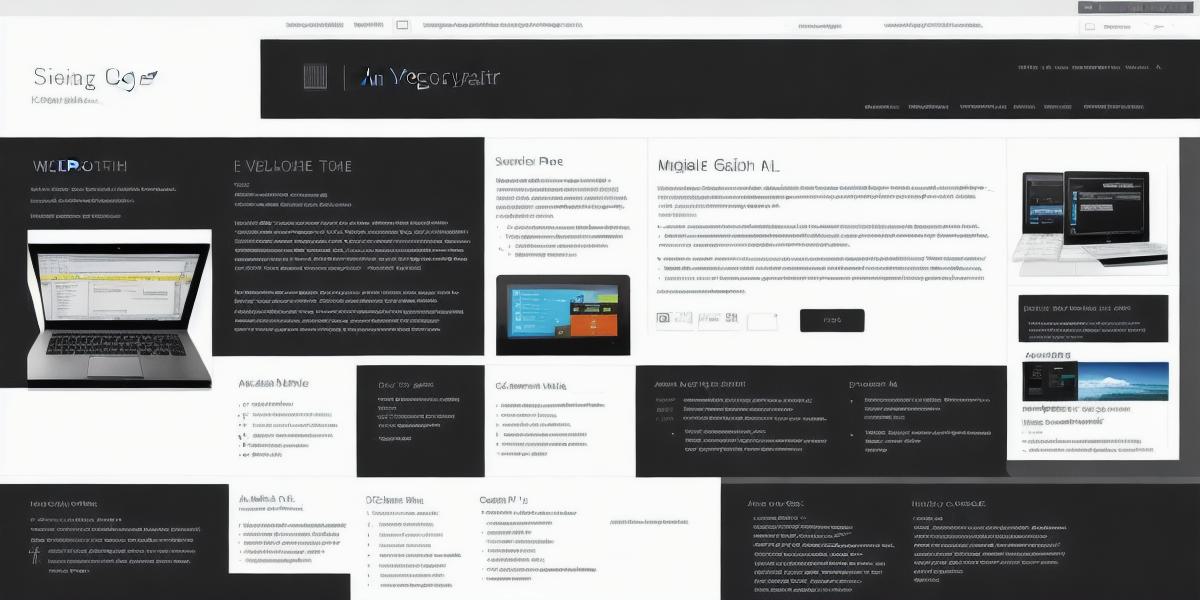Web Development with Java: A Comprehensive Guide for Web Developers
Java is a powerful programming language that has gained immense popularity in recent years due to its versatility and scalability. One of the most popular use cases for Java is web development. In this comprehensive guide, we will explore everything you need to know about building web applications with Java. We will cover topics such as web frameworks, server-side programming, database integration, and much more.
Web Frameworks in Java
Java has several powerful web frameworks that make it easy for developers to build scalable and robust web applications. Some of the most popular web frameworks for Java include Spring Boot, Hibernate, Struts, and MyBatis. Each of these frameworks offers a different set of features and capabilities, making them suitable for different types of web applications.
Spring Boot, for example, is a popular choice for building microservices-based web applications. It provides a lightweight and flexible architecture that makes it easy to develop and deploy web applications quickly. Hibernate is another popular framework that provides powerful data access capabilities and supports both object-relational mapping (ORM) and SQL-based databases.
Server-Side Programming with Java
Java is a server-side programming language, meaning that it runs on the server and is responsible for processing requests from clients. Server-side programming in Java can be done using various technologies such as servlets, JSPs, and JavaServer Faces (JSF).
Servlets are the most basic form of server-side programming in Java. They allow developers to create web applications that can handle multiple client requests simultaneously. JSPs (JavaServer Pages) are a more advanced technology that allows developers to create dynamic web pages using Java code. JSF is a web framework that provides a more user-friendly interface for creating and deploying web applications.
Database Integration in Java
Java has built-in support for databases, making it easy for developers to integrate databases into their web applications. Some of the most popular database technologies used with Java include MySQL, PostgreSQL, and Oracle.
Java provides a powerful set of APIs for working with databases, including JDBC (Java Database Connectivity) and Hibernate. These APIs allow developers to easily connect to and manipulate databases from their Java code.
Case Study: Building a Web Application with Spring Boot and MySQL
Let’s take a look at an example of how you might build a web application using Spring Boot and MySQL. In this case, we will be building a simple blog application that allows users to create and manage blog posts.

First, we will need to set up our development environment by installing Java, MySQL, and the Spring Boot toolkit. Once we have done this, we can create a new project in Spring Boot and configure it to use MySQL as the database.
Next, we will need to create the necessary classes for our blog application, including entities for BlogPosts and Users, as well as controllers and services for managing these entities. We will also need to create views for displaying blog posts and allowing users to create and edit them.
Finally, we will deploy our application to a production server and configure it for secure access using SSL/TLS encryption.
Conclusion
Java is a powerful and versatile programming language that is well-suited for web development. With its robust set of frameworks, powerful APIs, and built-in support for databases, Java provides everything you need to build scalable and robust web applications quickly and efficiently. Whether you are a beginner or an experienced developer, there is something in this guide for everyone.
